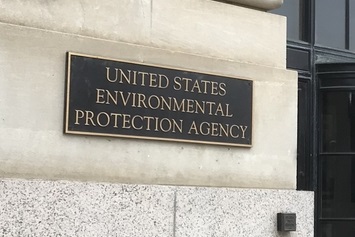The EPA’s Office of Inspector General (OIG) recently reported that the Agency failed to comply with two Clinton-era Executive Orders (EOs) when former Administrator Scott Pruitt decided to rush into publication the proposed repeal of an Obama-era rule intended to reduce air pollution generated by glider vehicles.

Jerome460 / Shutterstock.com
Additionally, says the OIG, the EPA did not follow its “principal rulemaking guidance”—the Action Development Process—in working on the glider repeal proposal, nor did it meet requirements of the Federal Records Act.
According to the OIG, Pruitt raced ahead with the repeal proposal after representatives of the glider industry informed him that the original rule would effectively eliminate the industry.
The Agency agreed to two of the three recommendations the OIG made to correct the rulemaking deficiencies associated with the repeal proposal.
The OIG’s report provides an opportunity to review the rulemaking requirements in the EOs and why the OIG believes the Agency did not meet them.
What are gliders?
A glider is a heavy-duty vehicle comprising a new chassis and cab and a used engine, transmission, and/or rear axle. In its 2016 rule, the EPA noted there had been a dramatic increase in the production of glider vehicles—from a few hundred a year in 2004 to about 10,000 a year when the rule was issued. The Agency also noted that nitrogen oxides (NOx) and particulate matter (PM) emissions from gliders using pre-2007 engines could be 10 times higher than emissions from vehicles with new engines. NOx and PM emissions from gliders using pre-2002 engines could be 20 to 40 times higher than current engines. The rule capped the number of gliders that could be produced in 2017 and required that by January 1, 2021, all gliders meet emissions standards similar to those for new vehicles.
The proposed repeal seeks to withdraw all emissions requirements because, the EPA now states, gliders are not new vehicles, and therefore, the Agency lacks the authority to regulate them.
EO 12866
This EO directs that significant regulatory actions, including proposals, by federal agencies be submitted to the Office of Management and Budget’s Office of Information and Regulatory Affairs (OIRA) for review. An action can be significant for several reasons—most commonly if it has an annual effect on the national economy of $100 million or more; this means the action is economically significant. A rule’s designation can be significant if the $100 million threshold is not met but other criteria are. Either the EPA or the OIRA can declare an action significant.
The OIG reports that in its initial draft sent to the OIRA, the EPA indicated that the proposal was economically significant, but the Agency included no analyses supporting that designation.
“We found that the EPA did not conduct any of the analyses required by EO 12866 for either a ‘significant’ or ‘economically significant’ regulatory action, nor did the EPA include feasible alternatives in the proposed rule, as required by EO 12866,” states the OIG.
Absent any analysis from the EPA, an OIRA staff member responsible for reviewing the rule conveyed to another EPA staff member a belief that the rule should be changed from economically significant to significant.
EO 13045
EO 13045 applies to economically significant actions that concern an environmental health or safety risk that an agency has reason to believe may disproportionately affect children. The EO requires an evaluation of the environmental health risks to children and an explanation of why the planned regulation is preferable to alternatives. However, as with EO 12866, the EPA did not comply with EO13045 because it did not complete an analysis to determine the significance level of the proposed repeal.
“Not completing the analysis required by EO 13045 resulted in the public not knowing the impacts of the proposed rule on children’s health,” stated the OIG. “Because no alternatives were considered, as required by EOs 12866 and 13045, it is also unknown whether the proposed rule is preferable to potential alternative actions.”
Conclusion
The EPA’s actions “call into question the quality of EPA rulemaking processes and leave the public and stakeholders without the information necessary to make informed comments on EPA regulatory actions,” concludes the OIG. Again, this comment also addresses ways in which the OIG found that the EPA’s actions deviated from its Action Development Process under the Federal Records Act.
The EPA agreed with the OIG’s recommendation that the Agency explain to the public why it changed its position on the economically significant designation of the rule. The Agency also agreed to include all analyses of the proposal in the public docket. The EPA did not agree with the OIG’s recommendation to document the decisions it made during the glider repeal rulemaking process, including substantive decisions reached orally, to comply with applicable recordkeeping and docketing requirements.